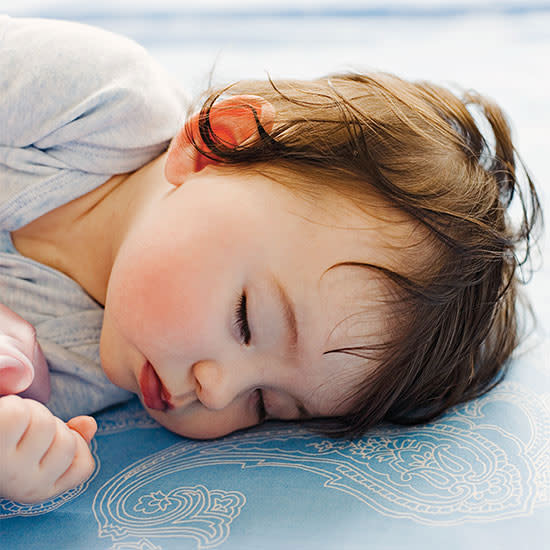Toddler Sleep 101: What You Need to Know

Some toddlers sleep through the night and others turn bedtime into a battle, but most kids share general sleep tendencies. Here are answers to common questions on toddler sleep habits, including bedtimes and naps.
How Many Hours of Sleep Does a Toddler Need?
By the time a baby becomes a toddler, she will need 10 to 14 hours of sleep per day. This includes one nap (after 18 months, naps are reduced from two to one) that lasts about one to three hours. Keeping these numbers in mind, a toddler will normally sleep 10 hours or more per night. Establish a healthy sleep pattern when a child is young to assist in creating beneficial sleep cycles throughout her life.
Do All Toddlers Nap?
It is common for children to continue napping throughout the toddler years. "Between the ages of one and two, he may well drop one short nap and have one long sleep instead. If he naps for 45 minutes to an hour in the morning, he should sleep for two hours after lunch," says Rachel Waddilove in Sleep Solutions: Quiet Nights for You and Your Child from Birth to Five Years. "It's a good idea to wake him after an hour in the morning, and try not to let him sleep past about 3:30 p.m., as this might jeopardize his nighttime sleeping." But some children are naturally prone to sleeping less than others, and a child's behavior will usually indicate if he needs more or fewer naps. If a child is fussy and clumsier than usual, he may need more sleep. For other kids, morning naps stop between 12 and 18 months without a change in behavior.
Why Do Toddlers Need Something to Snuggle With?
Many children rely on a lovey, like a special blanket or stuffed animal, to get a good night's rest. There is a reason for this. Greg Hanley, M.D., director of the Children's Sleep Program at Western New England University in Springfield, Massachusetts, says everyone has certain elements they depend on for a healthy sleep, whether it's leaving the fan running or taking socks off. "When children wake up at night and cry out, it's usually because there's something wrong with the sleep dependency. All kids wake up about 10 times per night, and if the conditions they initially had to get to sleep aren't there when they try to go back to sleep, they will cry out to get it," Dr. Hanley says.
Why Won't My Child Go to Sleep?
Many toddlers keep themselves awake because they don't want to miss any activities and they want to be with Mom and Dad. Maintaining regular bedtimes and naptimes can help with this issue. If it's the afternoon and your child is unable to nap, plan some quiet downtime in place of the nap. If it's nighttime, it's possible your child has developed a fear of the dark. "Younger toddlers aren't usually afraid of the dark, but by the time your child is nearly 3, he may be saying that he wants a light left on in his bedroom," Waddilove says. "This can be a very real fear, so it's best not to battle it. Either leave his door open with the landing light on, or buy a plug-in night light for his room."
Where Should a Toddler Nap?
To help with the sleep routine, it's better for toddlers to have one place that's just designated for sleep. Rather than napping in a crib, a stroller, or on the couch, have one napping spot to help your child associate one consistent place with rest. Create a nap nest by choosing a cozy corner and piling it with any blankets, pillows, and stuffed animals to soothe your child.
When Should I Start Transitioning to a Big Kid Bed?
The ideal time to move a child out of a crib and into a bed varies with each family. Usually, kids begin sleeping in a big-kid bed between the ages of 2 to 3; some children transition earlier because they have a habit of climbing out of their crib. When you start transitioning your child from a toddler bed to a big-kid bed, prepare for the move by talking about it, reading books about kids graduating into beds, and telling fun stories. Try to make the transition during a period of calm within the household. If a child is already adjusting to a new day care or preschool, or embarking on toilet training, she may be less likely to accept another change.
